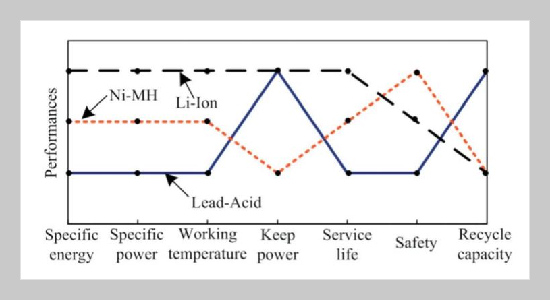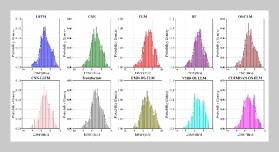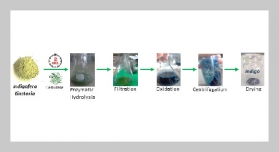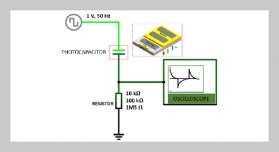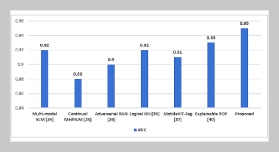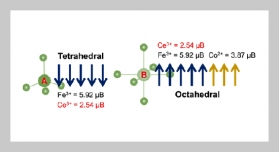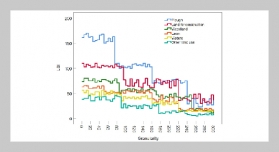REFERENCES
- [1] Kounetas, K. E., (2018) Energy consumption and CO2 emissions convergence in European Union member countries. A tonneau des danaides ? Energy Economics 69,111�127.doi:10.1016/j.eneco.2017.11.015
- [2] Du, J., J. Chen, Z.Song, et al.(2017) Design method of a power management strategy for variable battery capacities range-extended electric vehicles to improve energy efficiency and cost-effectiveness, Energy 121, 32�42. doi: 10.1016/j.ene-rgy.2016.12.120
- [3] Wang, Y. N., B. Meng, Y. Shen, et al. (2014) Researches on power systems of extended range electric vehicles, Zhongguo Dianji Gongcheng Xuebao/ proceedings of the Chinese Society of Electrical Engineering 34(27), 4629�4639. doi: 10.13334/j.02588013.pcsee.2014.27.010
- [4] Jawahar, C. P., and P. A. Michael (2017) A review on turbines for micro hydropower plant, Renewable and Sustainable Energy Reviews 34, 882�887. doi: 10. 1016/j.rser.2017.01.133
- [5] Scungio, M., F. Arpino, V. Focanti, et al. (2016) Wind tunnel testing of scaled models of a newly developed darrieus-style vertical axis wind turbine with auxiliary straight blades, Energy Conversion and Management 130, 60�70. doi: 10.1016/j.enconman.2016.10.033
- [6] Yokoyama, T., and Kagawa (2017) U.S. Patent 15/ 258, 857.
- [7] Su, T., C. Ji, S. Wang, et al. (2017) Investigation on performance of a hydrogen-gasoline rotary engine at part load and lean conditions, Applied Energy 205, 683�691. doi: 10.1016/j.apenergy.2017.08.049
- [8] Ji, C., T. Su, S. Wang, et al. (2017) Effect of hydrogen addition on combustion and emissions performance of a gasoline rotary engine at part load and stoichiometric conditions, Energy Conversion and Management 121, 272�280. doi: 10.1016/j.ijhydene.2009.06.082
- [9] Zhang, X.,Z.Wu,X.Hu, etal.(2017) Trajectory optimization-based auxiliary power unit control strategy for an extended range electric vehicle, IEEE Transactions on Vehicular Technology 66(12), 10866�10874. doi: 10.1109/TVT.2017.2725447
- [10] Li, J., Y. Wang, J. Chen, et al. (2017) Study on energy management strategy and dynamic modeling for auxiliary power units in range-extended electric vehicles, Applied Energy 194, 363�375. doi: 10.1016/j. apenergy.2016.09.001
- [11] Nikdel, M. (2014) Various battery models for various simulation studies and applications, Renewable and Sustainable Energy Reviews 32, 477�485. doi: 10. 1016/j.rser.2014.01.048
- [12] Chambon, P., S. Curran, S. Huff, et al. (2017) Development of a range-extended electric vehicle power train for an integrated energy systems research printed utility vehicle, Applied Energy 191, 99�110. doi: 10. 1016/j.apenergy.2017.01.045
- [13] Li, J., X. Jin, and R. Xiong (2017) Multi-objective optimization study of energy management strategy and economic analysis for a range-extended electric bus, Applied Energy 194, 798�807. doi: 10.1016/j.apenergy. 2016.10.065
- [14] Ren,G.,G.Ma,andN.Cong(2015) Review of electrical energy storage system for vehicular applications, Renewable and Sustainable Energy Reviews 41, 225�-236. doi: 10.1016/j.rser.2014.08.003
- [15] Li, Y., J. Yang, and J. Song (2017) Design principles and energy system scale analysis technologies of new lithium-ion and aluminum-ion batteries for sustainable energy electric vehicles, Renewable and Sustainable Energy Reviews 71, 645�651. doi: 10.1016/j.rser. 2016.12.094
- [16] Sasaki, T., Y. Ukyo, and P. Novák (2013) Memory effect in a lithium-ion battery, Nature Materials 12(6), 569�575. doi: 10.1038/nmat3623
- [17] Egbue, O., and S. Long (2012) Barriers to widespread adoption of electric vehicles: an analysis of consumer attitudes and perceptions, Energy Policy 48, 717�729. doi: 10.1016/j.enpol.2012.06.009
- [18] Mizuno,H.(2017) Nissan gasoline engine strategy for higher thermal efficiency, Combustion Engines 169(2), 141�145. doi: 10.19206/CE-2017-225
- [19] Sheldon, T. L., J. R. DeShazo, and R. T. Carson (2017) electric and plug-in hybrid vehicle demand: lessons for an emerging market, Economic Inquiry 55(2), 695�713. doi: 10.1111/ecin.12416
- [20] Muniz, S. T. G., and B. M. Belzowski (2017) Platforms to enhance electric vehicles’ competitiveness, International Journal of Automotive Technology and Management 17(2), 151�168. doi: 10.1504/IJATM.2017. 10005768
- [21] Carriero, A., M. Locatelli, K. Ramakrishnan, et al. (2018) A review of the state of the art of electric traction motors cooling techniques, SAE Technical Paper 01-0057. doi: 10.4271/2018-01-0057
- [22] Yang, X. G., T. Liu,and C.Y.Wang (2017) Innovative heating of large-size automotive Li-ion cells, Journal of Power Sources 342, 598�604. doi: 10.1016/j. jpowsour.2016.12.102
- [23] Thackeray, M. M., C. Wolverton, and E. D. Isaacs (2012) Electrical energy storage for transportation— approaching the limits of, and going beyond, lithium ion batteries, Energy & Environmental Science 5(7), 7854�7863. doi: 10.1039/C2EE21892E
- [24] Lu, L., X. Han, J. Li, et al. (2013) A review on the key issues for lithium-ion battery management in electric vehicles, Journal of Power Sources 226,272� 288.doi: 10.1016/j.jpowsour.2012.10.060
- [25] Redelbach, M., E. D. Özdemir, and H. E. Friedrich (2014) Optimizing battery sizes of plug-in hybrid and extended range electric vehicles for different user types, Energy Policy 73, 158�168. doi: 10.1016/j. enpol.2014.05.052
- [26] Hu, X.,C.M.Martinez,andY.Yang(2017) Charging, power management, and battery degradation mitigation in plug-in hybrid electric vehicles: a unified cost optimal approach, Mechanical Systems and Signal Processing 87, 4�16. doi: 10.1016/j.ymssp.2016.03.004
- [27] Lukic, S. M., J. Cao, R. C. Bansal, et al.(2008) Energy storage systems for automotive applications, IEEE Transactions on Industrial Electronics 55(6), 2258� 2267. doi: 10.1109/TIE.2008.918390
- [28] Boynuegri, A. R. (2017) A power management unit with a polarity changing inverter for fuel cell/ultra-capacitor hybrid power systems, International Journal of Hydrogen Energy 42(43), 26924�26932. doi: 10. 1016/j.ijhydene.2017.05.171
- [29] Deka, B. K., A. Hazarika, J. Kim, et al. (2017) Recent development and challenges of multifunctional structural super capacitors for automotive industries,International Journal of Energy Research 41(10), 1397�1411. doi: 10.1002/er.3707
- [30] Sami, B. S., N. Sihem, B. Zafar, et al. (2017) Performance study and efficiency improvement of hybrid electric system dedicated to transport application, International Journal of Hydrogen Energy 42(17), 12777�12789. doi: 10.1016/j.ijhydene.2016.11.145
- [31] Ahmadi, S., S. M. T. Bathaee, and A. H. Hosseinpour (2018) Improving fuel economy and performance of a fuel-cell hybrid electric vehicle (fuel-cell, battery, and ultra-capacitor) using optimized energy management strategy, Energy Conversion and Management 160, 74�84. doi: 10.1016/j.enconman.2018.01.020
- [32] Chemali, E., M. Preindl, P. Malysz, et al. (2016) Electrochemical and electrostatic energy storage and management systems for electric drive vehicles: state-of-the-art review and future trends, IEEE Journal of Emerging and Selected Topics in Power Electronics 4(3), 1117�1134.doi:10.1109/JESTPE.2016.2566583
- [33] Naoi, K., and P. Simon(2008) New materials and new configurations for advanced electrochemical capacitors, Journal of the Electrochemical Society 17(1), 34�37. doi: 10.1023/A:1020220425954
- [34] Sheberla, D., J. C. Bachman, J. S. Elias, et al. (2017) Conductive MOF electrodes for stable super capacitors with high areal capacitance, Nature Materials, 16(2), 220�224. doi: 10.1038/nmat4766
- [35] Song, Z., J.Li,J.Hou, etal.(2018) The battery-super capacitor hybrid energy storage system in electric vehicle applications: a case study,Energy 154,433�441. doi: 10.1016/j.energy.2018.04.148
- [36] Arani, A. A. K., H. Karami, G. B. Gharehpetian, et al. (2017) Review of flywheel energy storage systems structures and applications in power systems and microgrids, Renewable and Sustainable Energy Reviews 69, 9�18. doi: 10.1016/j.rser.2016.11.166
- [37] Itani, K., A. De Bernardinis, Z. Khatir, et al. (2017) Comparative analysis of two hybrid energy storage systems used in a two front wheel driven electric vehicle during extreme start-up and regenerative braking operations, Energy Conversion and Management 144, 69�87. doi: 10.1016/j.enconman.2017.04.036
- [38] Hannan, M. A., M. M. Hoque, A. Mohamed, et al. (2017) Review of energy storage systems for electric vehicle applications: issues and challenges, Renewable and Sustainable Energy Reviews 69, 771�789. doi: 10.1016/j.rser.2016.11.171
- [39] Faraji, F., A. Majazi, and K. Al-Haddad (2017) A comprehensive review of flywheel energy storage system technology, Renewable and Sustainable Energy Reviews 67,477�490.doi:10.1016/j.rser.2016.09.060
- [40] Chellaswamy, C., and R. Ramesh (2017) Future renewable energy option for recharging full electric vehicles, Renewable and Sustainable Energy Reviews 76, 824�838. doi: 10.1016/j.rser.2017.03.032
- [41] Read, M. G., R. A. Smith, and K. R. Pullen (2015) Optimisation of flywheel energy storage systems with geared transmission for hybrid vehicles, Mechanism and Machine Theory 87, 191�209. doi: 10.1016/j. mechmachtheory.2014.11.001
- [42] Shaukat, N., B. Khan, S. M. Ali, et al.(2018) A survey on electric vehicle transportation within smart grid system, Renewable and Sustainable Energy Reviews 81, 1329�1349. doi: 10.1016/j.rser.2017.05.092
- [43] Nojavan, S., K. Zare, and B. Mohammadi-Ivatloo (2017) Application of fuel cell and electrolyzer as hydrogen energy storage system in energy management of electricity energy retailer in the presence of the renewable energy sources and plug-in electric vehicles, Energy Conversion and Management 136, 404�417. doi: 10.1016/j.enconman.2017.01.017
- [44] Eriksson, E. L. V. , and E. M. A. Gray (2017) Optimization and integration of hybrid renewable energy hydrogen fuel cell energy systems–a critical review, Applied Energy 202, 348�364. doi: 10.1016/j.apenergy. 2017.03.132
- [45] Emonts, B., S. Schiebahn, K. Görner, et al. (2017) Re-energizingenergysupply:electrolytically-produced hydrogen as a flexible energy storage medium and fuel for road transport, Journal of Power Sources 342, 320� 326. doi: 10.1016/j.jpowsour.2016.12.073
- [46] Wang, Y., D. Y. C. Leung, J. Xuan, et al. (2017) Areview on unitized regenerative fuel cell technologies, part b: unitized regenerative alkaline fuel cell, solid oxide fuel cell, and microfluidic fuel cell, Renewable and Sustainable Energy Reviews 75,775�795. doi:10. 1016/j.rser.2016.11.054
- [47] Wang, C., S. B. Wang, J. B. Zhang, et al. (2015) The durability research on the proton exchange membrane fuel cell for automobile application, Progress in Chemistry 27(4), 424�435. doi: 10.7536/PC140807
- [48] Bakangura, E., L. Wu, L.Ge,etal.(2016) Mixed matrix proton exchange membranes for fuel cells: state of the art and perspectives, Progress in Polymer Science 57, 103�152. doi: 10.1016/j.progpolymsci.2015. 11.004
- [49] Bharti, A., G. Cheruvally, and S. Muliankeezhu (2017) Microwave assisted, facile synthesis of Pt/CNT catalyst for proton exchange membrane fuel cell application, International Journal of Hydrogen Energy 42(16), 11622�11631. doi: 10.1016/j.ijhydene.2017.02.109
- [50] Narayanan, H., and S. Basu (2017) Regeneration of CO poisoned Pt black anode catalyst in PEMFC using break-in procedure and KMnO4 solution, International Journal of Hydrogen Energy 42(37), 23814�23820. doi: 10.1016/j.ijhydene.2017.03.037
- [51] Barilo, N. F., S. C. Weiner, and C. W. James (2017) Overview of the DOE hydrogen safety, codes and standards program part 2: hydrogen and fuel cells: emphasizing safety to enable commercialization, International Journal of Hydrogen Energy 42(11), 7625� 7632. doi: 10.1016/j.ijhydene.2016.04.070
- [52] Wang, D., M. Muratori, J. Eichman, et al. (2018) Quantifying the flexibility of hydrogen production systems to support large-scale renewable energy integration, Journal of Power Sources 399, 383�391. doi: 10. 1016/j.jpowsour.2018.07.101
- [53] Kim,J., and S. Kim(2018) Obstacles to the success of fuel-cell electric vehicles: are they truly impossible to overcome? IEEE Electrification Magazine 6(1), 48� 54. doi: 10.1109/MELE.2017.2784635
- [54] Kojima, K., and K. Fukazawa (2015) Current status and future outlook of fuel cell vehicle development in TOYOTA, ECS Transactions 69(17), 213�219. doi: 10.1149/06917.0213ecst
- [55] Xu, X., B. Xu, J. Dong, et al. (2017) Near-term analysis of a roll-out strategy to introduce fuel cell vehicles and hydrogen stations in Shenzhen China, Applied Energy 196, 229�237. doi: 10.1016/j.apenergy.2016.11. 048
- [56] Fernández, R. Á., F. B. Cilleruelo, and I. V. Martínez (2016) A new approach to battery powered electric vehicles: a hydrogen fuel-cell-based range extender system,International Journal of Hydrogen Energy 41(8), 4808�4819. doi: 10.1016/j.ijhydene.2016.01.035
- [57] Robledo, C. B., V. Oldenbroek, F. Abbruzzese, et al. (2018) Integrating a hydrogen fuel cell electric vehicle with vehicle-to-grid technology, photovoltaic power and a residential building, Applied Energy 215, 615� 629. doi: 10.1016/j.apenergy.2018.02.038
- [58] ElNozahy, M. S., and M. M. A. Salama (2014) Studying the feasibility of charging plug-in hybrid electric vehicles using photovoltaic electricity in residential distribution systems, Electric Power Systems Research 110, 133�143. doi: 10.1016/j.epsr.2014.01.012
- [59] Ezzat, M. F., and I. Dincer (2016) Development, analysis and assessment of a fuel cell and solar photovoltaic system powered vehicle, Energy Conversion and Management 129, 284�292. doi: 10.1016/j.enconman.2016.10.025
- [60] Gibson, T. L., and N. A. Kelly (2010) Predicting efficiency of solar powered hydrogen generation using photovoltaic-electrolysis devices, International Journal of Hydrogen Energy 35(3), 900�911. doi: 10. 1016/j.ijhydene.2009.11.074
- [61] Akar, F., Y. Tavlasoglu, and B. Vural(2017)An energy management strategy for a concept battery/ultra capacitor electric vehicle with improved battery life, IEEE Transactions on Transportation Electrification 3(1), 191�200.doi:10.1109/TTE.2016.2638640
- [62] Ayad, M. Y., M. Becherif, A. Henni, et al. (2010) Sliding mode control applied to fuel cell, supercapacitorsand batteriesfor vehiclehybridizations, Proc. of 2010 IEEE International Energy Conference and Exhibition, Manama,Bahrain, Dec. 18�22, 478�483.
- [63] Tate, E. D., M. O. Harpster, and P. J. Savagian (2008) The electrification of the automobile: from conventional hybrid, to plug-in hybrids, to extended-range electric vehicles, SAE International Journal of Passenger Cars-electronic and Electrical Systems, 1(1), 156�166. doi: 10.4271/2008-01-0458
- [64] Tie, S. F., and C. W. Tan (2013) A review of energy sources and energy management system in electric vehicles, Renewable and Sustainable Energy Reviews 20, 82�102. doi: 10.1016/j.rser.2012.11.077
- [65] Ren, G. Z., and G. Q. Ma (2012) A novel scheme design of power unit for extended range electric vehicles, International Journal of Electric and Hybrid Vehicles 4(4), 314�326. doi: 10.1504/IJEHV.2012.053022


